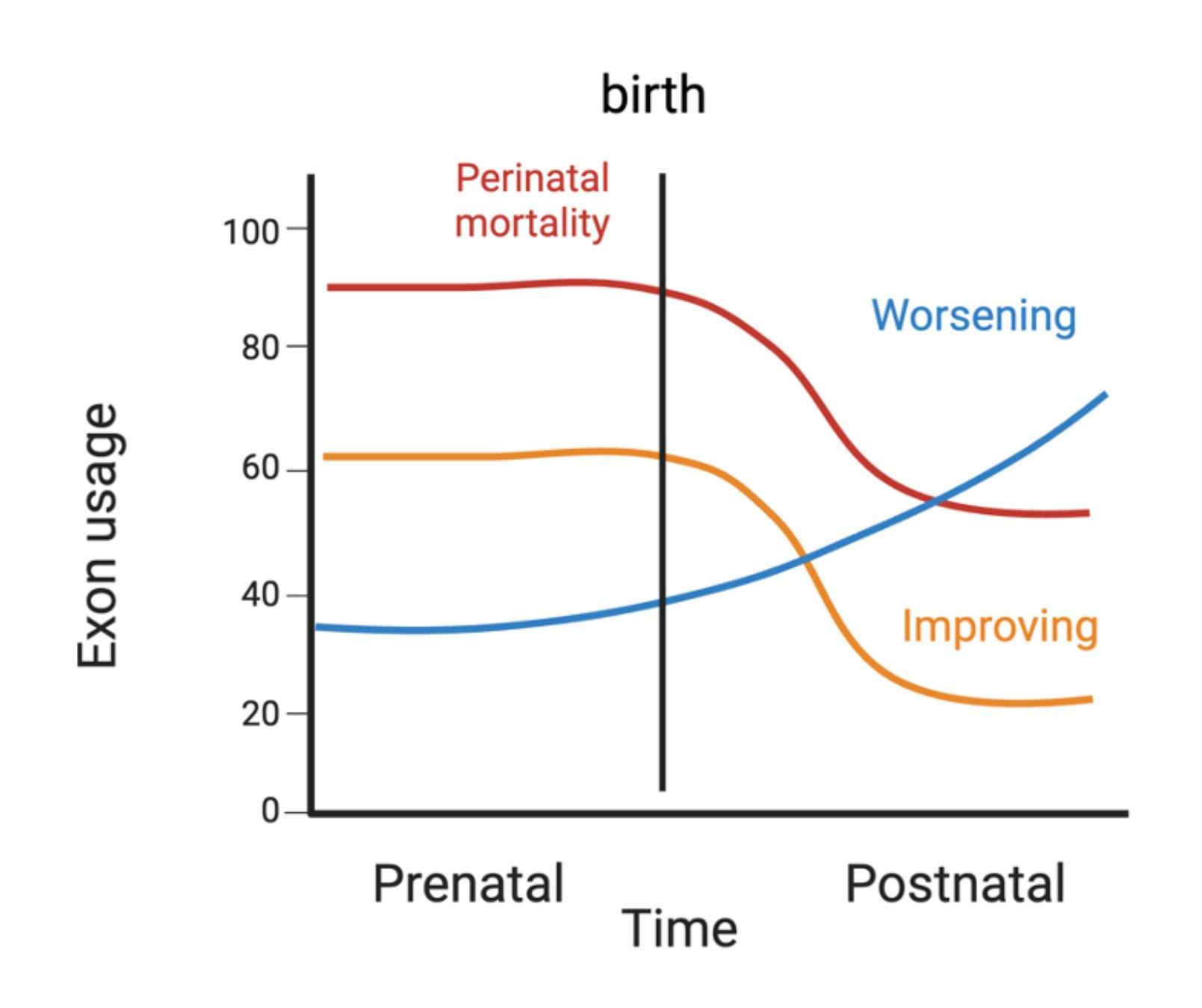Inferring disease course from differential exon usage in the wide titinopathy spectrum

Improving prognosis prediction in titinopathies: a step toward personalized medicine.
Titin is the biggest human protein, crucial for muscle function. When both copies carry damaging variants (biallelic TTN truncating variants, or TTNtv), the resulting conditions range from severe congenital myopathies to milder adult-onset forms. Some cases also involve heart problems, while others mainly affect skeletal muscles. Because of titin’s complexity, predicting the impact of mutations on a person’s health has been a major challenge.
We studied 13 patients with rare TTNtv, collecting genetic and clinical data from medical centers worldwide. Using RNA sequencing on control muscle samples, we analyzed how different parts of the titin gene are expressed in various tissues (heart and skeletal muscles) and across different life stages. This allowed us to identify which gene segments (exons) are most expressed in fetal and adult muscles.

Our study suggests that exon usage—how different exons are used at various life stages—can serve as a useful predictor of disease course:
- Severe, often fatal cases: they carry variants located in exons highly expressed in fetal muscles.
- Patients who improved over time: they have at least one variant in an exon that becomes less important as muscles develop.
- Patients whose condition worsened with age: they carry at least one variant in an exon that becomes more expressed in adult muscles.
In one case, our method helped rule out titinopathy as the cause of disease, demonstrating its potential for improving diagnostics.
Our study highlights how understanding differential exon usage can improve the diagnosis and prognosis of titin-related diseases. More broadly, this approach could be applied to other genetic disorders, as 70% of the human genes show variable exon usage.
Original article:
Inferring disease course from differential exon usage in the wide titinopathy spectrum.
Di Feo MF, Oghabian A, Nippala E, Gautel M, Jungbluth H, Forzano F, Malfatti E, Castiglioni C, Krey I, Gomez Andres D, Brady AF, Iascone M, Cereda A, Pezzani L, Natera De Benito D, Nascimiento Osorio A, Estévez Arias B, Kurbatov SA, Attie-Bitach T, Nampoothiri S, Ryan E, Morrow M, Gorokhova S, Chabrol B, Sinisalo J, Tolppanen H, Tolva J, Munell F, Camacho Soriano J, Sanchez Duran MA, Johari M, Tajsharghi H, Hackman P, Udd B, Savarese M. Annals of Clinical and Translational Neurology. 2024.
Highlights 2024

A retrospective longitudinal study of 52 Finnish patients with X-linked retinoschisis
Understanding X-Linked Retinoschisis (XLRS) in Finland.

Inferring disease course from differential exon usage in the wide titinopathy spectrum
Improving prognosis prediction in titinopathies: a step toward personalized medicine.

International canine gene research database accelerates biomedical research

Whole-exome and whole-genome sequencing of 1,064 individuals with type 1 diabetes reveals novel genes for diabetic kidney disease

Burden of oral diseases predicted the development of excess weight in early adolescence

The brain insulin receptor gene network and associations with frailty index